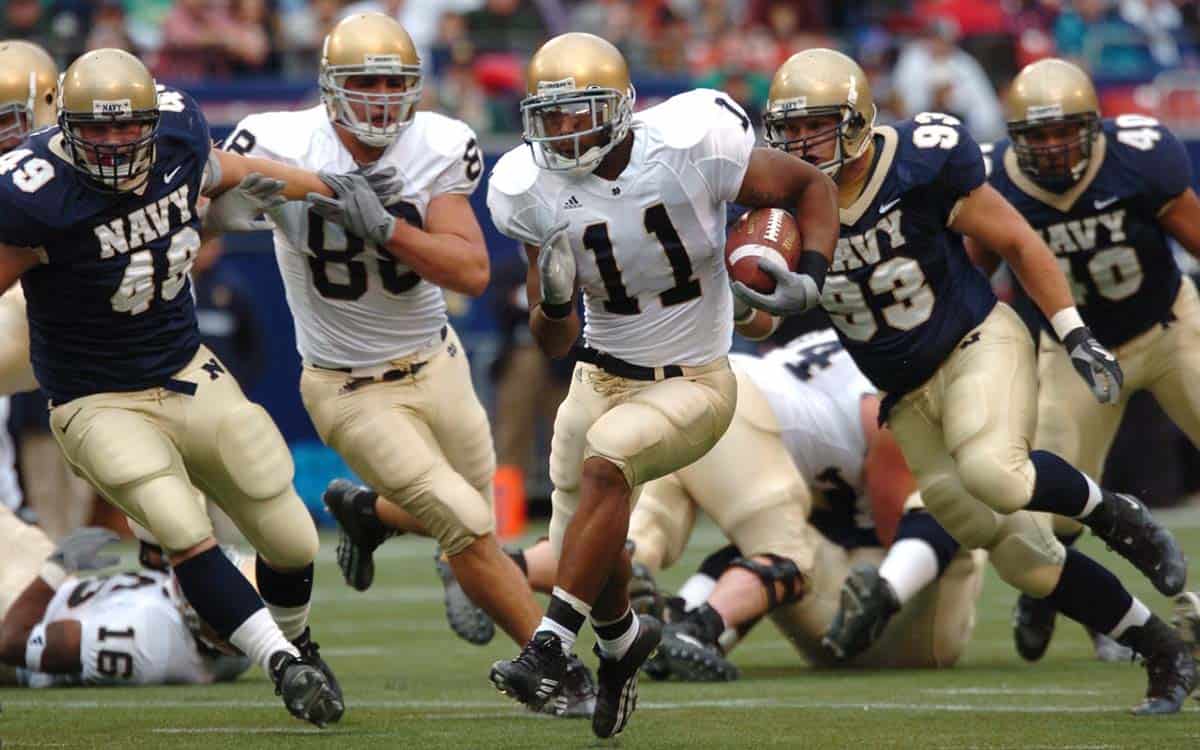High school football is a sport played by many high school teams in America and Canada. It also ranks as one of the most popular interscholastic sports in both Canada and the US. However, there has been a steady decline in popularity for the sport over the past few years. Quite a several football legends we know today are products of the high school game. High school football is also the same as preps football and prep football. It takes its roots back to the 19th century and it tallies with the time several college football programs began. Back in the late part of the 19th century and the early 20th century, several high school and college teams were pitched against one another.
Also, several high school traditions such as marching bands, pep rallies, and mascots are gotten from College.
When does high school football season end?
High school football games in America are often played in four quarters of 12 minutes each. Hence, they total 48 minutes of playing time. But just as it is with all other levels of football, the clock usually runs longer than that. The typical regular reason for high school football lasts between 8 and 10 games. A team having a good football season should be able to advance to the playoffs. The playoffs are a single round elimination and often require several wins to become a class or section champion.
It is worthy of note that the real length of high school football is in its practices which begin in August. This practice requires the players to practice for five days in a week. During the school year, the high school teams ensure that their players train from after school till about 6 pm or so. High school football is quite intense and often needs quite a lot of dedication.
Some Unique Rules You Should Be Mindful Of
In a bid to bring order to the game, the National Federation of State High School Associations came up with some rules governing High School Football in America. The rules governing the college game and the high school game are pretty much the same. They, however, have a few differences.
- In High school football, there are four quarters which each have 12 minutes as against the fifteen minutes which other forms of the game offers.
- The game kickoffs always take place at the kicking team’s 40-yard line. This is as opposed to the thirty which is obtainable in the collegiate game and 35 in the NFL.
- Also if a ball crosses the plane of the goal line on a missed field goal, that ball will be designated as a touchback and the opposing team will begin at the 20-yard line. It should also be noted that any kick that crosses the goal line is designated as a touchback and kicks cannot be returned out from the jurisdiction of the end zone. Also, the defense will not be able to return an extra-point attempt for a score.
- The type and usage of overtime is the prerogative of the individual state association.
It is however interesting to note that a minimum of one unique high school rule has been adopted at the college football level. Back in 1996, the rules governing overtime were first used by Kansas high school teams. They were eventually adopted by the NCAA.
The majority of Canadian schools make use of Canadian Football rules which were specially designed for high schools.
What Are The Sanctioning Organizations For High School Football?
Every state in America has a minimum of one sanctioning organization for its public schools. In several states, there is a separate body governing such activities for private schools. Every sanctioning body usually divides its member schools into two to eight size classes depending on the level of enrolment. Also, each classification is often grouped into regions. The size classes are grouped from the smallest to the largest. This is even though the number of sizes and nomenclature differs from one state to the other.
For instance, in the smaller high schools especially those in the rural areas, there are several variations on the game using nine, eight or six players for each side as against using eleven.
What Happens In The Case Of Homeschooling?
Students who are undergoing homeschooling may also engage in high school football via freelance or independent teams. They may not be able to take part in a regular-season game, however. These teams usually compete against smaller schools. In certain states, the state law may permit homeschooled kids to participate in interscholastic athletics representing their school districts.
A Look At A Typical High School Season
Preparation for the upcoming football season often begins with some exercise such as weightlifting and some other related activities. In several states, this usually starts some week after the conclusion of a regular season and some others it may be the end of august. Some states permit seven on seven scrimmages. There are however others that do not allow formal practices during the summer. Towards the end of the summer in the middle of august, double sessions are known to begin and often last for about a week. At the end of the double sessions, practice for the regular-season starts with daily sessions every weekday afternoon except the game day. The practices often take place on Saturday but do not hold on Sundays.
Furthermore, the regular season is often made up of a maximum of ten games in most of the states. The first game of each season often takes place around the early part of September while the final regular-season game takes place in the middle of November. Teams are allowed to have at least one bye weeks during the regular season.
The bigger schools especially those that run rather successful programs usually draw large attendances even during regular-season games. They may even play the game at a regular stadium to accommodate their parents and coaching staff in addition to the large crowds that grace such games.
Quite a several high school football games are often scheduled for Friday nights. Alternate days are quite common in the bigger school districts where the arena available is used by more than one school.
Pre-Season And Playoffs
Before the 1970s, quite a several states awarded their state champions via polls. However, the playoff systems have become quite popular ever since and quite a several states have seen a steady increase in the number of teams that are qualified to participate.
It is worthy of note that only four states don’t have a single state champion. They are Rhode Island, New Jersey, New York, and Massachusetts. These states only award regional champions. In several large cities such as Virginia Beach, Pittsburgh, Chicago and New York, public schools are known to compete in their city leagues. What this means is that they may or may not play any opponent outside of the league.
However, in some states such as West Virginia or Illinois where there are no regional championships, the playoffs are often seeded on a statewide basis. Here, the championship games are often held in a neutral venue such as an NFL or college stadium. Such fields are often more equipped to take care of certain eventualities such as weather issues.
It is worthy of note that the current record for the highest number of high school football championships is the Washington High school located in Sioux Falls.
What Is The Coaching Structure Like?
Quite several bigger high schools often have their junior varsity team in addition to the regular teams for their high school game. More often than not, if there is a junior varsity team, freshmen will be drafted to play in the JV team. In some circumstances, younger players may move indirectly to the varsity team even when they may never have played with the JV team.
Usually, there won’t be any playoffs for the junior varsity teams and usually, the team that has the best record is awarded the championship in their league. The junior varsity team often has the same type of schedule the varsity team has. Also, junior varsity games are held every Thursday night while the varsity teams play on Friday nights. The junior varsity team often puts on old varsity shirts which they often inherit from the varsity teams. One of the main aims of the coaching staff is to pass across frustration-free communication for the high school teams.
Final Word
The life of a high school football player is one that is filled with memories whose contents depend on the actions they take. From the chats with the coaches to the wins and losses, everything builds up to something. The ultimate dream of every high school football player is to make it to the big leagues.
You May Like These Articles As Well:







